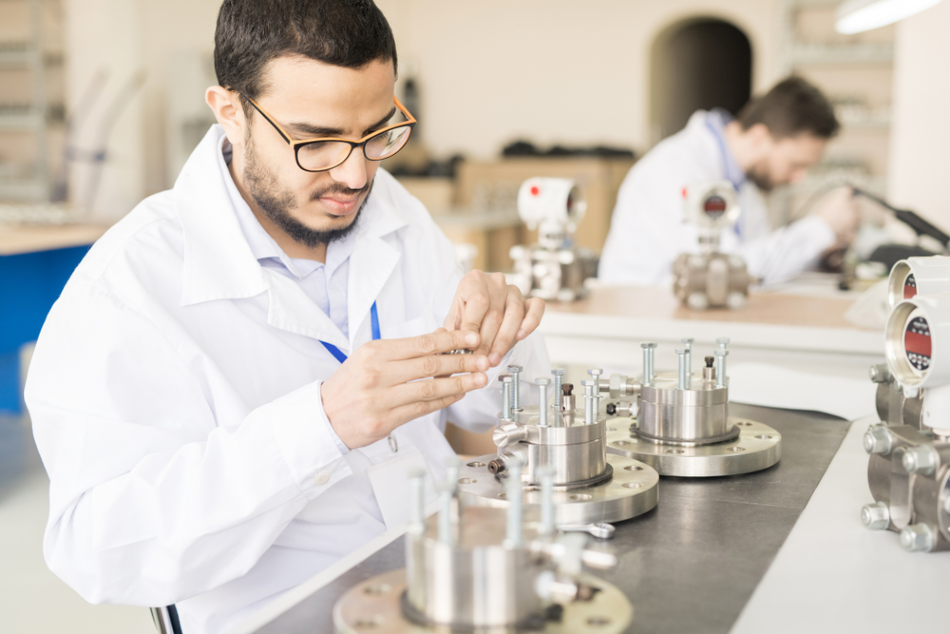Article Updated on 22nd April 2021

Image Credit: SeventyFour/Shutterstock.com
Tribology refers to the science of how surfaces in natural and artificial systems interact in relative motion. The principles of lubrication, friction, and wear are key to the discipline. As it is a highly interdisciplinary field, scientists from different areas of the scientific community are often drawn together to help solve problems in tribology.
To advance knowledge of tribology and to make innovations in this area, collaborative efforts from experts in biomedical science, chemistry, chemical engineering, computer science, mechanics, engineering, manufacturing, mathematics, physics, and more are needed.
Common Problems in Tribology
While the science of tribology influences numerous industries, the automotive and medical sectors are those that particularly rely on its knowledge and innovations to improve its products and raise its level of quality.
Problems presented by the automotive industry are mostly fueled by the growing demand to produce components that have lifetime guarantees. The products need to be created with higher levels of quality, as consumers require parts with longevity, not only in terms of how long it will last without breaking but also in terms of how the components function over their lifetime.
The demands of the medical industry are similar. There is a growing demand for medical prosthetics, for example, that are easy to install and last a lifetime. Both industries are facing challenges in tribology; they need to develop components with surfaces that do not cause wear as they interact with each other over extended periods. Components also need to be developed in a way that prevents a change in how they behave as they continue to be in constant contact with their surroundings, offering the ability to do the same job repeatedly and to the same level of quality.
The solution relies heavily on understanding how two surfaces interact with each other. Recent advances in tribology have seen the increase in the development of surface texture of coatings to offer friction-free use.
The monitoring of these coatings is essential to understanding how effective they are, and how this may influence the longevity of a component. The task of monitoring can be difficult, but recently, sensors have been employed to conduct this task efficiently and accurately.
Using Sensors to Overcome Tribology Limitations
The past decade or so has seen the advent of the use of sensors to help solve tribology problems. The coatings that are being tested for use in numerous applications have benefited from the addition of embedded sensor layers within the coating.
These sensor layers have been designed to produce distinctive luminescence spectra in response to laser illumination, which makes it possible to measure the wearing of the coating by measuring changes in the amount of light transmitted back. This offers information on the changing thickness of the coating.
Coatings are designed to ideally last a lifetime, protecting the component from wear and extending the longevity of the product. Using embedded sensors to measure wear methodologically allows scientists to make accurate calculations about how coatings will influence the products that they are intended for. It also helps scientists to innovate new and better coatings by allowing them to see how different coating compositions function. It also enables them to make these innovations faster because they have a direct and accurate way of measuring the coating’s effectiveness.
Future Directions of Tribology and Sensors
Tribology will likely be positively impacted by the use of sensors to help develop more effective coatings. This may lead to the development of more superior products in the automotive and medical industry, as well as others. Sensors will likely play a role in the continuing improvement of quality and longevity of a wide range of components and products.
References and Further Reading
https://www.sciencedirect.com/science/article/abs/pii/S0167892208700300
https://www.sciencedirect.com/science/article/abs/pii/S0043164808000471#!
Disclaimer: The views expressed here are those of the author expressed in their private capacity and do not necessarily represent the views of AZoM.com Limited T/A AZoNetwork the owner and operator of this website. This disclaimer forms part of the Terms and conditions of use of this website.